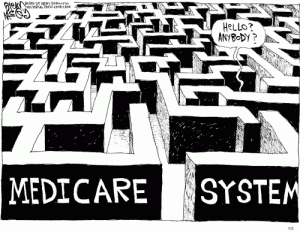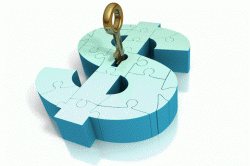Today, the National Investment Centers for Seniors Housing (NIC) released their 2nd quarter Skilled Nursing Occupancy Numbers.
By Steve Moran
Today, NIC (National Investment Centers for Seniors Housing) released their 2nd quarter Skilled Nursing Occupancy Numbers — download the report (registration required) — and at first glance, they are pretty discouraging. But when you begin to wrap your head around the data, there is more texture (much of it in the form of questions) than is first apparent. But first the highlights . . .
The Key Data
-
Skilled Nursing Occupancy dropped by 79 basis points (just over ¾ of a percent) from the prior quarter to 81.79%. This is a drop of 137 basis points from the year prior, going from 83.1% to 81.79%.
-
The “quality mix”, which is a measure of the revenue value of each resident day, has declined over the year by 142 basis points.
-
The growth in managed Medicare patient days is fairly flat.
-
Private pay resident mix was up slightly but the trend is downward.
What It All Means
I spent some time chatting with Bill Kauffman, Senior Principal, and Liz Liberman, Healthcare Analyst, at NIC. I spoke with Liz and Bill about the survey to get a better understanding of what the numbers really mean. What follows is my interpretation of the data in the report and the conversation I had with Bill and Liz. They should not be seen as a reflection of what they are thinking or what NIC is thinking. I know, in fact, that some of my thinking is different than theirs.
-
First, it does not mean as much as you might think.
At the end of the day, there are only two things that count in skilled nursing and in the rest of senior living. The first is whether or not you are providing great resident care (and maybe we could add to that providing a great work environment, both of which go hand in hand.)
The second is profitability or margin for you not-for-profit folks. It is fair to argue that if you are only at 80% occupancy you have a lot of wasted assets that are not working for you, but at the end of the day, 80% is not terrible if you are making a good profit.
-
When NIC looks at the data they are primarily focused on what they consider to be investment-grade skilled nursing, which is comprised of about 500,000 beds in the markets NIC tracks. What becomes important to this whole equation is what these numbers mean in the context of inventory. Like this:
If occupancy drops 137 basis points and inventory increases, it suggests demand is still strong. If it drops 137 basis points and inventory drops by 10% (which it didn’t), then the decrease is really scary. NIC has shared some of that data with me and when looking at investment grade properties the inventory is shrinking by maybe 500-1,000 beds, most quarters, which is not very much.
-
There are two big questions that remain unanswered: As Boomers age is a demand bubble coming? And if there is a demand bubble coming when will it hit?
Conventional wisdom and general market sentiment say it is coming. My personal view is that it will never happen and if it does, it will be teeny tiny. Two reasons for this: Nursing home care is expensive, it is only the thing you do when you have no other choice, and there are a ton of folks working on other options.
-
The other thing that makes these numbers a bit harder to figure out is that they come from 24 operators with just over 1,400 facilities. I don’t know, and forgot to ask what that distribution is, but regardless it is possible we are not seeing an accurate picture of the market yet, which is why, if you are a skilled provider you should be providing data. (And I would note that NIC provides some goodies for doing so.)
-
In all of this, it is ultimately important to remember that all senior living is local. We tend to see and remember the stories about facilities and organizations that are struggling or collapsing, but in reality, there are plenty of facilities and companies that are doing dandy.
We are at this huge important semi-slow moving inflection point when the nation is trying to figure out how to serve the aging Boomer population with dignity, quality of life and without breaking the bank. It is complicated and messy. But we are getting there. These reports are an important part of that process.








